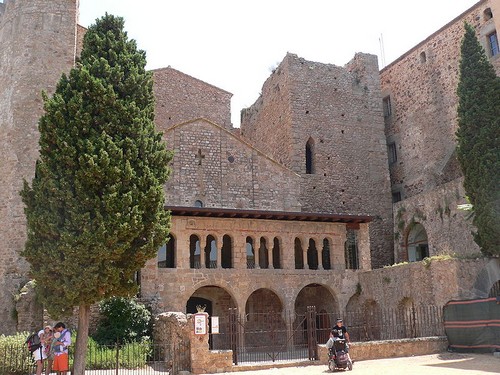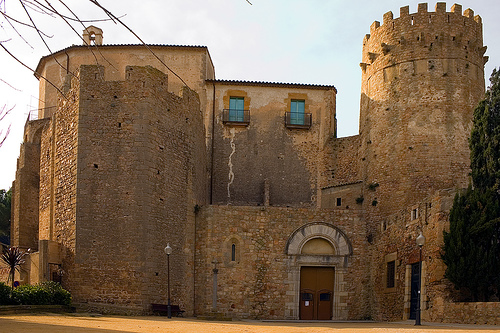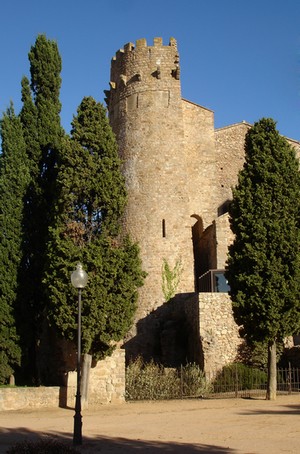Sant Feliu is a beautiful village in the south of the Costa Brava which counts among its beaches and monuments with one of the most important Benedictine monks monasteries of the Middle Age in Catalonia.

Porta Ferrada Monastery facade, in Sant Feliu de Guíxols, Girona, Costa Brava
Located in the center of the village, and close to the seafront, the monastery appears documented in the tenth century, when it was founded under the patronage of Sant Feliu, an African martyr. It is located inside an ancient fortress where archaeological remains have been found that are exposed to the public at the City Museum, also located in the complex.

External view of the towers in the architectural site Porta Ferrada, in Sant Feliu de Guíxols
The monastery itself, as today appears to us, was built in the eleventh century, although the current Baroque style comes from the work on the old building in the eighteenth century. The particularity of its facade, composed of three horseshoe-shaped arches, supported by four cylindrical columns, give the whole its catalan name Porta Ferrada (horseshoe-shaped door), and it’s the main symbol of this beautiful village, and also gives its name to the most famous music festival held every summer in Sant Feliu de Guíxols. On either side are two medieval defensive towers: Smoke Tower (Torre del Fum, of semicircular plant from which centuries ago were emitted smoke signals by sentinels to surroundings to warn about the arrival of enemies, mainly pirates by sea) and the Horn Tower (Torre del Corn, of rectangular plant and from where this instrument was rung with the same warning goal).

Torre del Fum (Smoke Tower) in Porta Ferrada Monastery, Sant Feliu de Guíxols
The Sant Benet Arch (Benet is Benedict Saint), of 1747, is facing the whole and was during many centuries the main entrance to the architectural site.

Sant Benet Arch, old entrance to the Porta Ferrada Monumental Site
The interior of the building has the Museum of History of the City, the Municipal Archives and the headquarters of the Official School of Tourism of Catalonia. The museum, a visit to it is highly recommended to admire the rest of the houses of monumental site, is composed of four rooms showing permanent exhibitions.
Thanks to the initiative of Baroness Thyssen, Carmen Cervera, it is expected that in the future the monastery hosts part of the Thyssen-Bornemisza Collection, specifically the Catalan Art works corresponding to the nineteenth and twentieth centuries, approximately 350. Not to forget the close relationship of the Baroness with Sant Feliu, where she owns a magnificent villa. This news, announced in 2008, will increase the overall artistic prestige of this ancient architectural site, an inexcusable visit for those wishing to explore the medieval architectural heritage of the Costa Brava.







